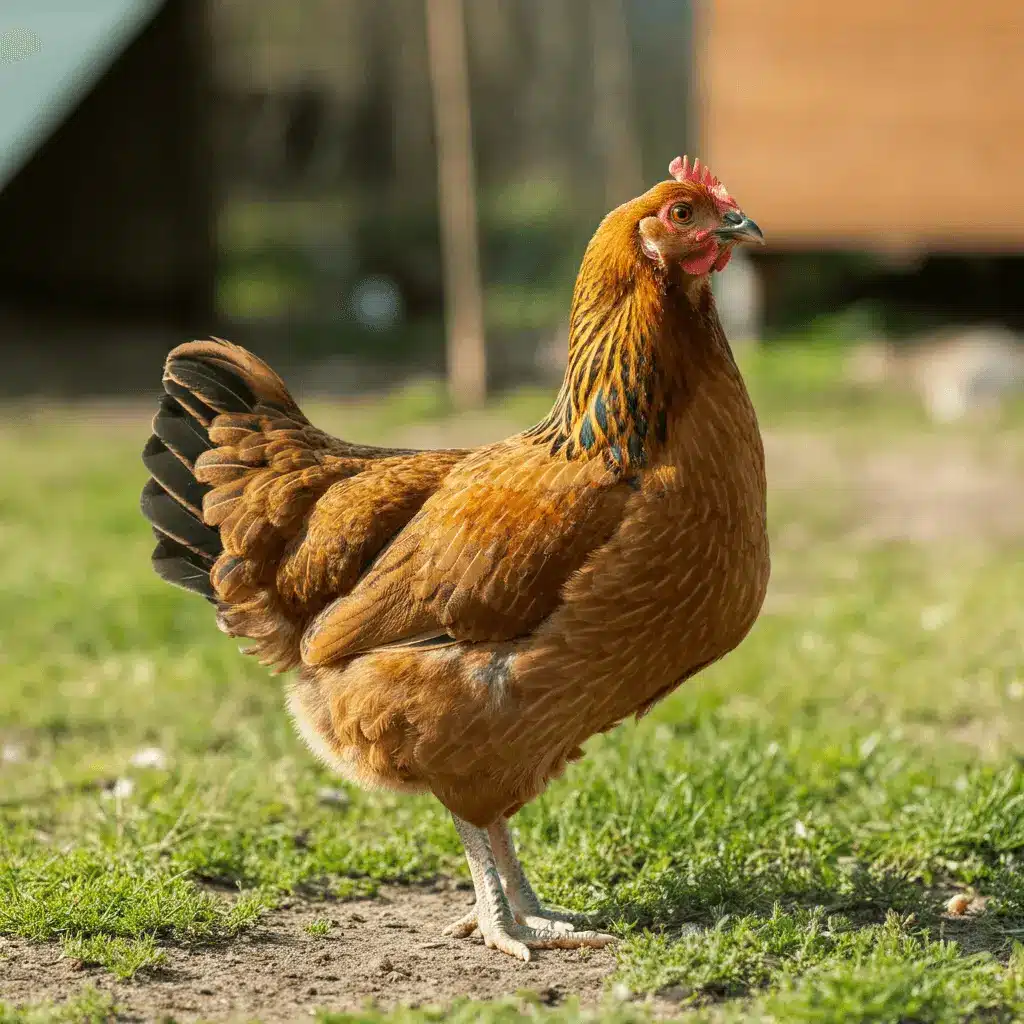Raising Orpingtons is a delight—these fluffy, friendly chickens bring charm to any backyard. But what if that sweet little “hen” you brought home starts showing signs of being a rooster? At just four months old, it might still be tricky to tell, especially if you’re new to chicken keeping.
This guide will help you identify whether your 4-month-old Orpington hen is actually a rooster. We’ll go over the physical traits, behavioral clues, and other telltale signs, giving you confidence as you observe and interpret your flock.
Understanding When Orpingtons Begin to Show Gender Traits
Orpingtons are known for their docile nature and slow maturity, which makes it harder to tell their gender early on. At 4 months old, however, you’ll begin to notice clearer distinctions. While hens and roosters start off very similar as chicks, hormonal changes around this age bring key differences to the surface.
Physical Signs to Spot a Rooster
1. Comb and Wattle Development
Take a close look at the comb and wattles. A 4-month-old Orpington rooster will often have a larger and brighter red comb and wattles compared to a hen, whose comb and wattles will remain smaller and less pronounced. The color of a rooster’s comb can also become more vivid as it continues to mature.
2. Saddle and Hackle Feathers
One of the most reliable indicators is feather development. A rooster’s saddle (the feathers that cascade down its back near the tail) will grow longer and more pointed. Similarly, hackle feathers (around the neck) will appear shinier and more pointed. Hens, on the other hand, have softer, rounded feathers in these areas.
3. Tail Feathers
Look for long, curving tail feathers called sickles. Roosters develop these elegant feathers around 4 to 6 months, giving their tail a more dramatic and showy appearance. Female Orpingtons tend to have shorter, simpler tails.
4. Overall Size and Stance
Roosters are typically larger and more robust than hens. They often stand taller and carry themselves with a more upright posture. If your 4-month-old Orpington displays a bold and broad stance, that could be another clue.
5. Spurring
Check the legs for spur development (small, bony protrusions near the ankles). Roosters begin to grow spurs around 4 to 6 months. While hens can occasionally develop small spurs, the ones on a rooster will typically grow larger over time.
Behavioral Clues of a Rooster
1. Early Crowing
This is often the biggest giveaway. If you’ve heard a raspy, awkward crow (think of it as a teenager’s voice cracking), you’re likely raising a rooster. Cockerels (young roosters) start practicing their crow around 3-5 months old, so 4 months is right in the ballpark.
2. Protective Instincts
Roosters tend to be more alert and protective of their flock, even at a young age. You might notice your Orpington keeping watch or acting defensively toward perceived threats.
3. Mounting Behavior
At 4 months, a young rooster may begin displaying dominance by attempting to mount other chickens in the flock. Hens don’t exhibit this behavior, so it’s a good indicator.
4. Bold Personality
Roosters tend to be bolder and more confident than hens. If your Orpington stands out as particularly assertive, curious, or headstrong, it may be showing its rooster streak!
Other Factors to Consider
While these physical and behavioral signs are strong indicators, it’s important to remember that every chicken matures at its own pace. Some Orpington hens may develop slightly larger combs or even exhibit bold behavior, throwing you off at first glance. DNA testing or consulting a vet or experienced chicken keeper could provide extra confirmation if needed.
How to Handle Unexpected Roosters
Discovering a rooster in your brood isn’t necessarily bad, but it might change your plans. Roosters serve important roles, such as protecting a flock and helping with reproduction if you decide to hatch chicks. However, if you live in an area with backyard restrictions on roosters or don’t want the added responsibility, you may need to rehome it.
When rehoming a rooster, seek out local farms or chicken keepers who might be interested. Chicken enthusiast groups on Facebook or other community forums can often help connect you with someone willing to take in a rooster.
Enjoy the Journey of Raising Chickens
Whether your Orpington is a hen or a rooster, the process of caring for chickens is always full of surprises. Paying attention to the small details—like comb size or behavior—will only bring you closer to understanding and appreciating your flock.
By 4 months old, your Orpington should begin showing more definitive traits, making it easier to tell. Keep observing, be patient, and enjoy these moments of discovery as you grow as a chicken keeper.
